The vascular plants are also known to be the tracheophytes and comes from Latin words that means duct.
They are together called to be Tracheophyta and make a good wide range of group for the land plants. The vascular plants examples are-
Trees
These can be classified under the group of angiosperms which characterizes an entire range of plant group that owns up to about 250,000 of them.
Trees are a good vascular plants examples for they can be much classed under dicots and monocots. Some of the examples under this can be the dogwood tree. The lilies, maple trees, elm and sunflower.
Most of the vascular plants examples start by making of fruit that has the seeds and also includes the peanuts, cones of pines and the apple with peppers kind of trees. There are very less trees that are said to be without seed and make spore for generation.

Shrubs
Anything despite a thing that can be called as algae, fungus, bacteria, lichen, moss is said to be vascular and has veins to have water conducted.
Shrubs are a medium good vascular plants examples and have nutrients fluid inside the plant. They are mostly small and range from small to medium and are woody plant. The have hard stems.
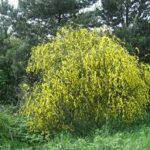
They are dense and have many branches and are also called bush at times. Bush are the intermediate between the trees and the shrubs and are about 2 or 6 meters in height. Few shrubs as vascular plants examples are the lemon, china rose, general rose and marigold. They have persistent stems of wood ranging in several number and none are dominant and is mostly of a 10 feet height.
Ferns
They are most common vascular plants examples and are different from the lycophytes that have true leaves.
Ferns help in getting the pollutants removes form the air, water, soil and is called to be phytoremediation. They help in absorbing of the water via the roots and the leaves and the microbes in the soil break them up.
These vascular plants examples can be called the non-flowering ones and have stems, hard leaves and generate via spores with having true roots. They have no flowers or no seeds and have tiny spores and can reproduce in a vegetative manner. It has a lifecycle of two stages being sporophytes and gametophytes.

Whisk ferns
They are of the genus Psilotum and do not have any true roots and are yet anchored by the rhizomes having many branches.
The branches are paired up with enations and look like the small leaves but do not have any vascular tissues. There is seen a synangia on the top of the enations which is made by having the three sporangia fused together and them made to produce sperms.
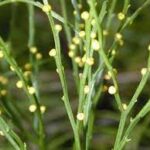
The name of this vascular plants examples is for the way it is used in the past. It has been used as a small broom that was made by having the branches tied up and sometimes in cultivation as a weed for green house. They have water and also tissue for conducting food yet lack roots and trees.
Lycophyte
The class of these are the lycopodiopsida and are the vascular plants examples for spore bearing ones.
They have more than 1200 species that are extant and it has orders that are recognized till the club mosses, the allies, the spike mosses and the quillworts. They are the oldest vascular plants examples and dominated many habitats for 40 million years.
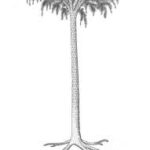
They are mostly evergreen and have spores that are flammable and also increases rarely and are yet illegal in few states. Both these and the ferns are separate lineages with these being the oldest and among many of the vascular plants examples and ferns are the sister to the seed plant.
Mosses
They are the non-vascular plants that are said to be of Bryophyta and are small that have hornworts, moss and liverworts.
They are the vascular plants examples that are dense and green and are mostly damp found in the shady areas. The single plant is mostly made of the simple leaf and are mostly made of thick cell linked to stem.
Some of them have tissue that shall conduct food and water but are poor in working and different from the ones seen in the vascular plants examples. Dawsonia is the tallest of all the mosses in the world. They have no seeds and fertilize by spores with giving out single spore capsules.
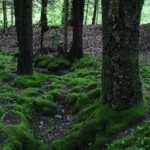
Horsetail
They are also called the Equistem and is the only alive genus in the family for the Equisetaceae that reproduce by perms.
They are vascular plants examples that are the alive fossils and are over for 100 million years with being quite diverse and then dominates. Some of them are large trees that reach about 30 feet. The branch of it represent the horse tail.
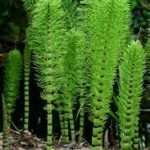
They have branch that are single and do not have any trace of being vascular still recognized as the vascular plants examples and classed under lycophytes and evolved by having the megaphylls reduced. It has leaves in the whorls manner and in nodes. They emerge below the internode and grow from the buds.
Angiosperms
They are the pants that help making of flowers and have seeds in the fruits and are the largest group of plant in the kingdom.
Most of the 80% of the plant that are green and known to the work are classed under this. They are the widest vascular plants examples and have seeds in the cotyledons with simple leaves and parallel veins.
Some of its example are the sugarcane, banana, the lilies and each of the floral whorls gas three members and have vascular bundles that are closed and are large in quantity. This group of vascular plants examples have roots that are adventitious.
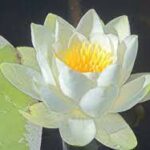
Gymnosperms
The seeds of it are said to cones and produce no flower or any fruits and also have seeds that are naked above the top if the leaves.
They reproduce via the seed or the ovule and the seeds are not seen until they mature. They are the vascular plants examples in the kingdom of Embyophyta and include the gnetophytes, ginkgoes, cycads and some of the common ones are firs, pines, spruces.

The seeds of these are not in the fruit and are seen om the areas that are high less in temperature and snow take place. They develop in the needle like leaves and are woody making up bushes and thus are not differentiated to style, stigma or the ovary.
It is mostly herbaceous and have stems that are joint and spikes of small flowers that are pollinated.
Grasses
They are the vegetation that have small plants and have leaves that are log and narrow. They grow wild and cultivate on a y lawn or area and is a fodder crop. They are from the family Poaceae and are monocotyledons.
Thy can also conduct photosynthesis and is a much common vascular plants examples and have special cells for having food and water conducted for its survival. This tissue is called phloem and xylem and are seen in the entire plant body.
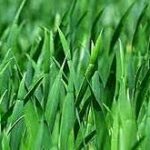
Orchids
They are the flowers that are monosymmetrical. This means that both of the halves of this represent mirror of each side.
The attribute of this vascular plants examples is that the female part is made to fuse together and are called the column and the male parts are fused together to the pollinarium that sits on the protected area under the anther.
They can be seen in-group or can grow individually. The one that stays alone can last out long and in many other varieties to cut the flowers. It can stay into 14 to 21 days and eat fungus and have particular type to have its generation. The seeds allow fungus to grow in roots and they digest it.
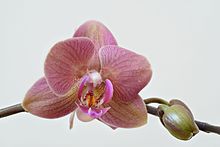
Flowering vascular plants examples
They are called to be the higher plants and evolved faster than any other plants for its complexity yet is said to be unscientific.
They have mechanism for photosynthesis and feed less on the microbes and depend on fungus. The flowering vascular plants examples include the

They have tissues that get distributed via the plants and have two types of tissue called the xylem and phloem responsible for water and food respectively. The combination of them is in adjacent to each other and is called the vascular bundle and are large in size compared to rest of the tissues.
Palm
These are the evergreen trees and are seen in area that are tropical and warn and are also have no branches. The leaf is long and are fan shaped and normally have old leaf making a regular trunk pattern. They bear fruits and can be sweet or juicy and common ones are coconuts and dates. The Arecaceae is a family of perennial flowering plants in the monocot order Arecales. Their growth form can be climbers, shrubs, tree-like and stemless plants, all commonly known as palms
Orchids
The identity of this vascular plants examples is that the male and female’s parts are fused together in separate manner under the cap and are also said to be a flower. They have stem that supports it and is called the pedicel. Above it is the flower base and the whorl being green has organs like leaf called the sepals.
Grasses
They have leaves that are longa and narrow but yet are short in its size. They have veins running parallel and have flower that are inconspicuous. Stems are seen and are round with having bulges at the nodes. They are mostly hollow in form except the nodular area.
Vascular tissue plants examples
The conducting tissues of these are much complex and have only one cell with having a vascular system for material transport.
They are vascular plants examples for they have tissues of vascular form and are the plants that have roots, leave and also real stems. The example of them is the
The principle phase for generation of it is the sporophytes that make up spore and are diploid and if make up gametes are said to be haploid. The water taken up much nutrient and are solutes that are taken from soil by roots and then taken up by xylem.
Flowering plant
They are the angiosperms and cover mostly about all the known plants in the world. They are large and have roots, leaves, stem and much more. They are said to be seen plants bearing fruit and flower. The seed are seen in the flower.
Ferns
They are the plants that do not have seed or flower. They reproduce by spore and are same to that of angiosperms. Sometimes they can reproduce by vegetative mode and have tiny spores and example can be the walking fern. The fern allies are mostly seedless and are true ferns and also good vascular plants examples. The greatest abundance of ferns was late in the Carboniferous period. any of the ferns found in fossil records are ancestors of modern, primitive fern families.
Gymnosperms
They have living roots that help get water during no transpiration and the osmosis takes place via the root. Both of the phloem and xylem are involved in the process of conduction and each take place as a separate base for nutrient. Sugar are made in the leaf and transported via roots and shoot.
Vascular system plants examples
The vegetative body of vascular plants is adapted to terrestrial life in various ways. In addition to vascular tissue, the aerial body is covered with a well-developed waxy layer that decreases water loss.
The root system is involved in the uptake from the soil of water and minerals that are used by the root system as well as the stem and leaves. Vascular plants include much more of the ones that are classed under angiosperms.
Clubmosses
Lycopodiopsida is a class of herbaceous vascular plants known as lycopods, lycophytes or other terms including the component lyco. Members of the class are called clubmosses, firmosses, spikemosses and quillworts. Clubmoss reproduction occurs through the dispersal of spores, found in sporangia, located singly or in groups, or in a yellow cone-like tip known as a strobilus.
Horsetails
They are fifteen species of rushlike conspicuously jointed perennial herbs, the only living genus of plants in the order Equisetales and the class Equisetopsida. As the fertile stems wither, the sterile, chlorophyll-producing secondary stems appear, covered with whorls of feathery green branches. The energy they gather through photosynthesis goes to underground tubers for storage, allowing horsetail to survive harsh winters and periods of drought.
Also Read:
- Do red blood cells have a cell wall
- Unicellular plants examples
- Monophyletic group example
- Gram negative bacteria examples
- Non motile bacteria examples
- Immiscible liquids examples
- Biome examples
- Domain bacteria examples
- Does mitochondria have double membrane
- Gravitropism plant example
I am Ankita Chattopadhyay from Kharagpur. I have completed my B. Tech in Biotechnology from Amity University Kolkata. I am a Subject Matter Expert in Biotechnology. I have been keen in writing articles and also interested in Literature with having my writing published in a Biotech website and a book respectively. Along with these, I am also a Hodophile, a Cinephile and a foodie.